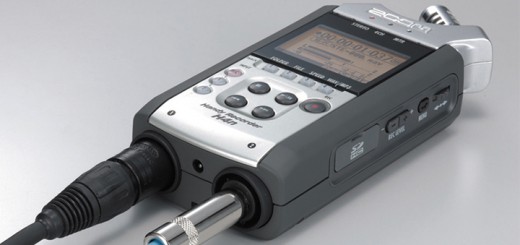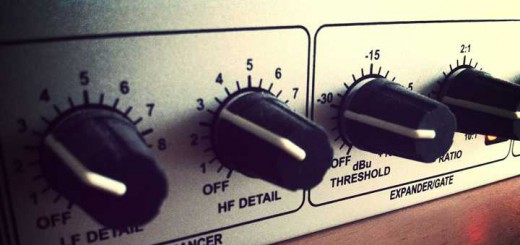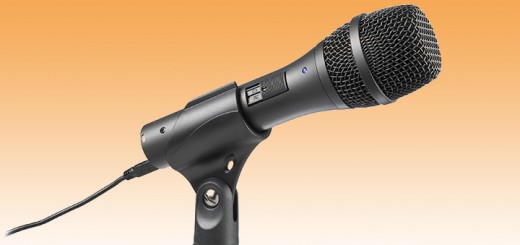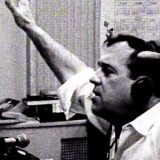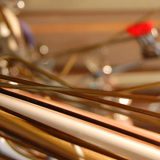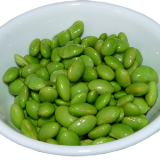The AT8035—Make Your Interviews Sound Up Close And Personal
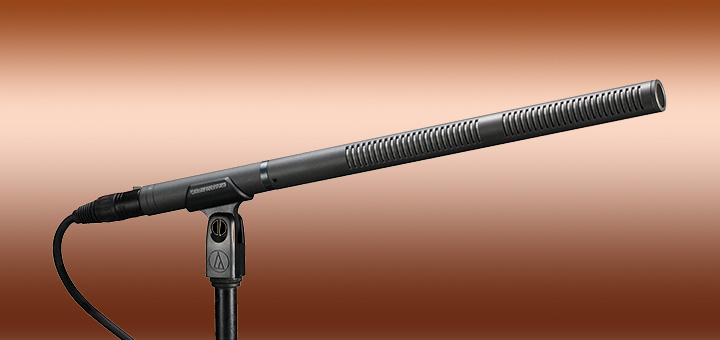 For years, I’ve recorded on-location interviews the old-fashioned way. If I could find a quiet place to record I’d use a pair of dynamic mics on desk stands. Or, I might mic my guest with a lavaliere and hope he or she wasn’t over-caffeinated and could sit still for a few minutes.
For years, I’ve recorded on-location interviews the old-fashioned way. If I could find a quiet place to record I’d use a pair of dynamic mics on desk stands. Or, I might mic my guest with a lavaliere and hope he or she wasn’t over-caffeinated and could sit still for a few minutes.
If I was out in the field, I’d grab one of my hand-held dynamic mics and hope for the best.
Then, I read this.
Okay, if you don’t want to follow the link right now I will tell you that it’s a comic book done by Ira Glass and his staff about how they put together an episode of This American Life. In it, he mentions that he records on-location interviews with an Audio-Technica shotgun mic. The mic he mentions has been superseded by the AT8035. Well, if it’s good enough for Ira Glass…I decided to take one along with me when I went to the National Association of Broadcasters show last April. I thought this would give the mic a real workout.
The AT8035 is a 14-inch long dynamic shotgun mic. It’s so light weight it took a bit of practice to not gesture while I was talking to an interviewee, forgetting that I was waving a mic around his or her face. (You get out of that habit quickly. Don’t ask me how I know.) The mic requires a few volts of power, easily supplied by a AA battery (included, along with a windscreen and mic stand adapter).
First of all, it has a great sound. It favors the highs a bit, and I found it was easy to overload the input of my Zoom H4N recorder if I wasn’t careful, but careful is my middle name (except when my middle name is mud). The sound is smooth and even, and there’s a built-in 80Hz cutoff filter to reduce the proximity effect, but if you use the mic properly you hardly have to worry about proximity…or popped p’s. Glass recommended, and I can tell you he’s right, holding the mic about 4- to 6-inches below your guest’s chin. Yes, that means you’re going to be working in his or her face, but that’s another plus. It’s easier to make eye contact, it makes the interview more intimate and personal and I found it kept me focused on my subject. It’s hard for my mind to wander when I’m working that closely with someone.
The pickup pattern is tight, just what I hoped it would be. Most of my recording was done in conference presentation rooms or on the show floor. The AT8035 performed flawlessly. My subject dominated the sound profile. Background noise, which in some cases forced me to lean in even more to hear what my subject was saying, was generally reduced to incidental sound. The mic converted the background noise to incidental sound that accentuated the on-the-spot recording. Using a little ambient sound I recorded after the interview I found it wasn’t that difficult to make up a background track I could combine with the interview to cover edits. The result was an interview that sounded like the audience was right there with me. I doubt I would have gotten the same result with a cardioid pattern, even if the mic was right up there in my subject’s face (and is there a faster way to kill an interview than to hold a mic an inch away from someone’s nostrils?).
There’s nothing about the AT8035 that gave me any problems. The response sounds nice and flat throughout the speech frequencies and the booming and popping that are usually the bane of my interview existence (especially when working with subjects who don’t know about mic technique) were gone. The mic became the best tool I have for letting me forget about the mechanics of the interview and concentrate on establishing a connection with my subject.
This is a pro microphone and it’s pricey when you compare it to prosumer products such as the ATR2100-USB (which is not a shotgun mic). I paid about $250 from my long-time equipment supplier. I checked on Amazon and found it sells for $269 (as of this writing). But prices on Amazon change frequently, so you might want to start on Amazon and shop around.
I have since found out (at the NAB show) that more and more voice over artists are using shotgun mics in their studios. I can see why. Less background noise. The ability to work back from the mic without sacrificing presence or quality. Most of these artists are using $1000 mics. I don’t know about you, but I’m not ready for that. But I will start using my AT8035 for recording my podcast segments and narration and I’ll report on that in a future post.

